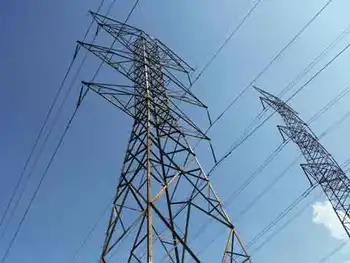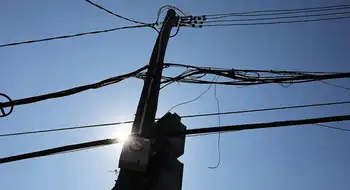AECL stands by Candu safety record
By Toronto Star
Substation Relay Protection Training
Our customized live online or in‑person group training can be delivered to your staff at your location.

- Live Online
- 12 hours Instructor-led
- Group Training Available
But they are minor quakes, says University of Toronto geologist Pierre-Yves Robin, who adds that Lake Ontario is too small to produce a tsunami.
From a geological perspective, this provinceÂ’s nuclear power facilities are effectively immune to the seismic cataclysms that sent reactors at JapanÂ’s Fukushima Daiichi facility down a molten path to obliteration last month, Robin contends.
Still, disasters ranging from hurricanes to ice storms to cascading blackouts could conceivably cut electrical supplies to this provinceÂ’s three nuclear generating facilities.
A tsunami-tripped power outage — and backup generator failures — cut off pumps that basted cooling water over the Japanese reactor cores, causing at least three of them to commence a meltdown. It’s believed that subsequent explosions caused damage to one reactor’s top pool for cooling spent fuel rods, allowing them to heat and emit dangerous radiation.
But at a time when the Fukushima factor is stoking anti-nuke pressures against two planned new reactors in Ontario, the question is: Could such power shutdowns result in the same kind of radiation-spewing cataclysm in this province?
Indeed, is there any scenario that might add the names of Pickering, Darlington or Bruce to those of Fukushima, Three Mile Island and Chernobyl in historyÂ’s list of nuclear plant nightmares?
EnvironmentalistsÂ’ serious concerns notwithstanding, many experts say the chances are slight.
For one thing, experts say, a slew of the safety systems installed in Canada’s own Candu reactors — 17 of which currently produce all this country’s nuclear energy — are powered by immutable forces of nature, and not by a vulnerable electrical grid.
The imperative forces of gravity, thermodynamics, vacuums, atomic absorption and brute structural inertia are used to power many of the Canadian reactorÂ’s key emergency systems.
The unique fuel and reactor design of Candus makes such accidents less likely than at any other type of nuclear generating facility.
“I think the nuclear plants here in Canada are probably some of the safest in the world,” says David Novog, director of McMaster University’s Institute for Energy Studies and a leading expert on nuclear plants.
“They’re designed to be able to cool themselves independently of the electrical grid for quite a long period of time. Certainly the rapid deterioration wouldn’t occur here.”
The first line of defence, Novog says, is a pair of emergency shutdown mechanisms that can cut off the nuclear chain reaction in the CanduÂ’s core immediately.
Like most reactors, Candus are equipped with shutdown rods that drop into the reactor from above, absorb the whizzing neutrons that create the coreÂ’s atom-splitting fission and turn the reactor off within two seconds.
The Canadian reactors also back up those rods with a liquid neutron “poison” that can be pumped quickly into the core to halt the neutron flow.
Neither system requires an electrical trigger. Indeed, they both turn on automatically if the electricity is turned off, with the poison being blasted in by compressed helium and the rods, hung above the core with electromagnets, being drawn down by gravity.
Shutting down the fission process brings core heat down to about 7 per cent of its running temperature.
While no longer fissioning, the fuel rods are still plenty hot. And, like those at Fukushima, they will get hotter still through natural radioactive decay unless they are continuously cooled by water.
Fortunately, the CanduÂ’s basic design means the rods in OntarioÂ’s reactors are already surrounded by a huge pool of cool water, says Jerry Hopwood, vice-president of product development at Atomic Energy of Canada Ltd., which designs the reactors.
Unlike most reactors, the Candu does not put all its uranium fuel eggs in one pressurized basket.
The bulk of the world’s reactors, like those at the Fukushima and Three Mile Island plants, use bundles of “enriched” uranium rods packed tightly together in a single vessel.
These vessels are filled with natural or “light” water, which will quickly boil off if not constantly circulated in and out.
In Candu reactors, the core is contained in a calandria, a boiler-shaped structure the size of a bus that houses hundreds of horizontal pressure tubes.
These cylindrical tubes — there are some 390 in each of the four Pickering A reactors — contain zircon-covered rows of small uranium fuel pellets and pressurized heavy water. The heavy water is pumped through the latticework of tubes, where it is heated by the fissioning fuel to 350C and carried to overhead steam generators containing ordinary water.
The generator water is heated, in turn, by the closed heavy water piping to create the steam that spins the plantÂ’s turbines and generates electricity. The amount of electricity created in this way daily by PickeringÂ’s eight reactors is equal to twice the amount generated every 24 hours on the Canadian side of Niagara Falls.
But the high temperature pressure tubes in the calandria are also surrounded by cooler pools of heavy water, which moderate or slow the free flow of neutrons that create the coreÂ’s nuclear chain reaction.
This moderating water — usually kept bathwater hot — would keep fuel temperatures under control for several hours on its own.
The calandria itself is also surrounded by a second layer of water contained within a metal shield tank that would take up some of the heat.
“We have layers of tanks around the Candu, all of which can absorb heat,” Novog says.
But Novog says the fuel would continue to be cooled primarily by water inside the pressure tubes through thermodynamic convection.
“Hot air wants to rise and hot water wants to rise,” Novog says.
As the pressurized water heats in the core, it will rise up though pipes to the steam generators above, where its heat will be lost. This cooler water will travel back in a loop and be replaced by newly heated liquid.
“Once the reactors are shutdown, we don’t really use any pumped circulation to remove the heat from the core,” Novog says. “As long as we have a place to dump that heat, the cycle goes on indefinitely.”
If these natural thermodynamics fail to keep core temperatures stable, the plants also have huge reservoirs of water stored either in tanks or nearby water towers.
The water tower shower would be driven by gravity, and the water tank liquid would be shot in by compressed air. This flow of relief water, which would require no electricity, would be released into the generator system to allow it to take up more heat.
Should any of the piping rupture, the resulting steam would be contained within the thick concrete “containment” domes that are the signature architecture of Candu plants.
“They are built to resist people flying an airplane into them,” says the U of T’s Robin, a structural geologist who has studied nuclear waste storage facilities. “Which is some ways is a much more likely cause of attack of a nuclear plant in Ontario than a natural disaster.”
Under the Candu’s “defence in depth” safety strategy, however, even these metre-thick containment domes have a backup should steam pressures within approach their structural limits.
Nearby vacuum buildings would suck in the steam, where water would be sprayed down from above to liquefy it, even under power outage conditions, Hopwood says.
Because Candu fuel is kept in separate pressure tubes, if one tube were to melt down, it would not likely cause all the others to fail.
As at all nuclear plants, spent Candu fuel rods are stored in on-site pools. Unlike at the Fukushima plant, however, Candu pools are located below grade and away from the reactor, not above it.
Still, there are many who say that itÂ’s folly to think that any nuclear plant is safe, no matter how many protective layers it sports.
“Every design has some passive features, some features that would survive somebody else’s accident,” says Norman Rubin, director of nuclear research and senior policy analyst at Energy Probe.
Rubin says that itÂ’s an apple and oranges comparison to smugly pit Candu safety features against those of other reactors because they are designed so differently and prone to different problems.
For example, the Candu has far more potential to create explosive gases in a meltdown situation because its pressure tubes are made out of zirconium, which produces hydrogen when it overheats and reacts with steam.
“Those are concerns in Candu... which are orders of magnitude greater than in Fukushima,” Rubin says. He points out that these tubes tend to become brittle and have needed to be replaced far earlier than expected in several reactors.
Novog counters that Candu plants are protected from this potentially explosive release by technology that plucks out hydrogen atoms and “recombines” them with oxygen to form water. And again, this technology does not require electricity.
Rubin says Canadian nuclear “experts” in the industry and at universities are almost uniformly cheerleaders for Candu and are blinded to its dangers.
“If you want to find someone other than the AECL who is more flamingly pro-nuclear in his outlook and his religion and his beliefs... try looking in academia,” he says, explaining that many have worked in the industry and are training students to join it.
Rubin likens reactors to science experiments that will inevitably go bad during repeated runs.
“And the more reactors you have,” he says, “the longer you run them, the worse the probability gets.”











